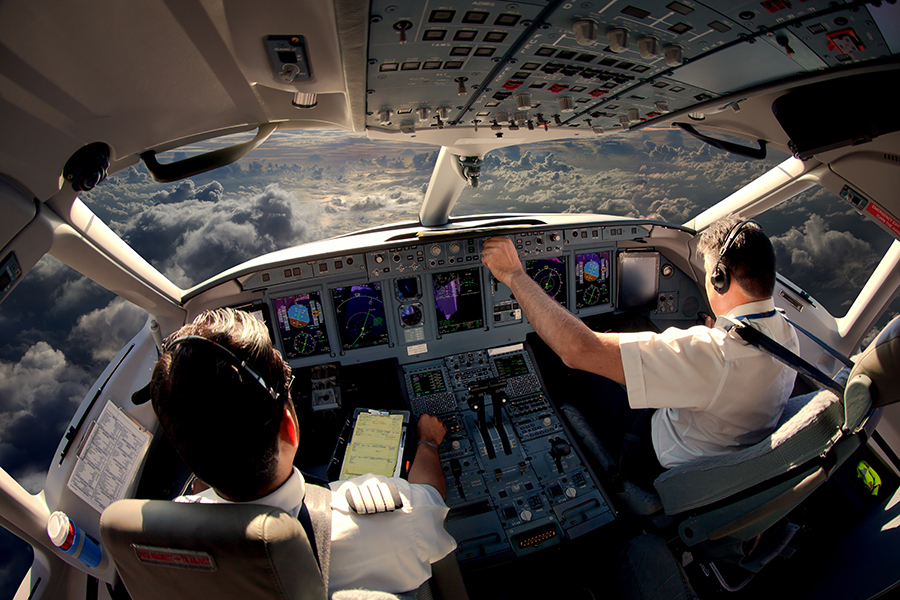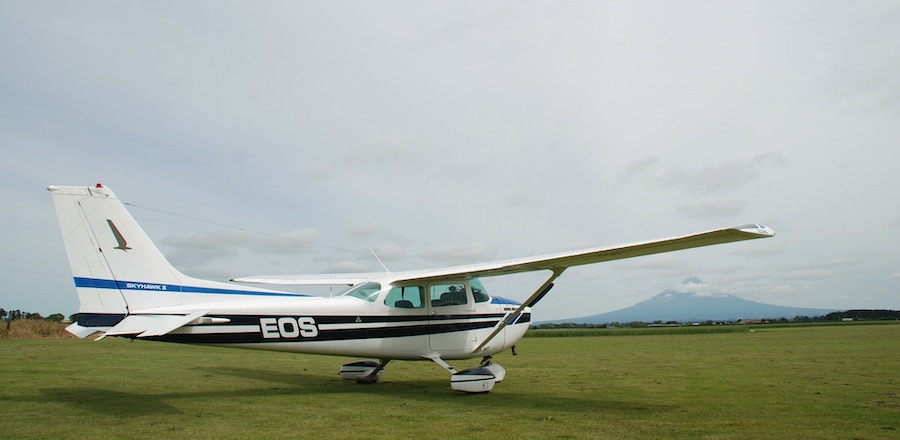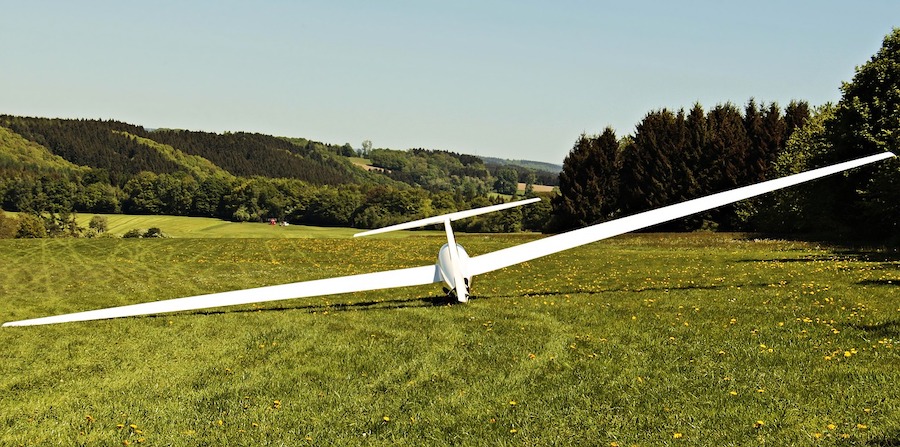-
Stalls, Private Pilots, and What You Really Need to Know
-
Signs of the Stall
- Stall Warning
- Buffeting
- High Nose Attitude
- Quiet Cockpit
- Nose Pitch
- High Rate of Descent
- 'Sloppy' Controls – Reduced Effectiveness
-
Why Do Pilots Practice Stalls?
-
A Note on Stall Speed…
-
Factors That Could Lead to a Stall - Private Pilots Take Note!
- AoA and Pitch Angle
- Quick Onset
- Configuration
- Aircraft Attitude
- G-Load
- Thrust Vectors
- Bad Weather and Windshear
- Wing Contamination
- Defective Equipment
- Spatial Disorientation
-
Stall Recovery - A Full Explanation for Private Pilots
- Stall Recovery - A Simple Step-by-Step Guide
-
Practicing Stalls - 8 Tips for Correct Stall Recovery Technique
- 1. Perform Clearing Turns
- 2. Practice Stall Recovery Often
- 3. Practice Stall Recovery in Different Configurations
- 4. Altitude!
- 5. Avoid Using Rudder!
- 6. Trim, Trim, Trim!
- 7. Use Senses, not Speed!
- Try and Simulate Real Life Scenarios (at a safe altitude)
-
Final Thoughts
Inadvertently stalling the aircraft can be dangerous, especially close to the ground. Low speed and low altitude are not a good combination. By being able to recognize and correct a stall, you’ll be a much better pilot. Today we discuss stalls, private pilot recovery techniques, and even give some tips to make sure your practice goes smoothly.
Stalls, Private Pilots, and What You Really Need to Know
Stall recovery is something you will need to practice. The primary aim, above all others, is to reduce the angle of attack to ensure the wing starts to work again. It is important to practice stall recovery for a variety of different scenarios.
These can include: –
- Power-off stalls
- Stalling in the turn
- Power-on stalls
- High altitude stalls
- Stalls in different configurations
Private pilots need to know what to look out for to recognize stalls. Here’s a detailed guide.
Signs of the Stall
If you’ve read our article on stalls, you’ll already know that a stall happens when the wing reaches a critical angle of attack. This leads to airflow separation, and the wing will stop producing lift. How will you know when this is happening?
Well, there are quite a few signs.
Some are obvious, and some are a little more subtle.
Here’s a run down of things to watch out for that could indicate a stall: –
Stall Warning
Most training aircraft are fitted with a device that will warn the pilot of a stall or an impending stall. The stall warning conventionally comes in a few different variations.
Some aircraft will have a small flap on the wing’s leading edge. This flap will be pushed up by the airflow at a given angle of attack (normally just short of the critical angle of attack). This flap completes an electrical circuit that will sound a buzzer, bell, or beeper in the flight deck.
Alternatively, older aircraft may feature a small notch, or slot, in the wing. When the airflow approaches the critical angle of attack, it produces an audible ‘whine’ that can be heard in the cockpit.
Buffeting
When the wing is working below the critical angle of attack, the airflow is ‘attached’ to the wing and is pretty smooth.
At high angles of attack, the airflow begins to separate from the wing and become turbulent. This turbulent air buffets the tailplane, producing a ‘rumbling’ effect on the controls. This can normally be easily felt on the controls in the cockpit.
Because all pilots become familiar with this sensation during their early stall training, some commercial aircraft are often fitted with a ‘stick shaker’ designed to replicate it.
High Nose Attitude
Generally, a high nose attitude will accompany a high angle of attack. This is particularly true in power-off stalls.
When they start their stall training, private pilots may find this high-nose attitude particularly disconcerting.
It is important to note the following, however…
The stall occurs at a given angle of attack, not an attitude, and there is a difference. It is just as possible to stall the aircraft in a dive by pulling back sharply or in a steep turn. In both cases, the nose, relative to the horizon, may not be high, but the critical angle is still reached.
Quiet Cockpit
While the stall always occurs at a set angle of attack, you’ll likely find that it is accompanied by low speed.
As the speed reduces, the airflow around the cockpit is reduced. This leads to the noise of the slipstream becoming quieter.
This effect is not as noticeable if you are performing power-on stalls.
Nose Pitch
When the stall occurs and depending on aircraft type, the pilot may notice that the nose suddenly drops as the wing stops producing lift.
This is particularly noticeable in small training aircraft designed to be inherently stable.
When the nose drops, you may find that the aircraft tends to introduce the first stages of stall recovery hands-off.
However, as the pilot, you should ensure that the correct recovery technique is actively followed, regardless of how ‘benign’ the aircraft’s inherent handling capabilities are.
High Rate of Descent
A stall is characterized by a severe reduction in how much lift the wing produces. A sustained stall will result in a high rate of descent.
This is a surefire sign of a stall, and the recovery procedure should be implemented immediately.
‘Sloppy’ Controls – Reduced Effectiveness
For flight controls to work effectively, they need a steady stream of air flowing over them. This airflow is reduced as stalls tend to happen at lower speeds. As a result, the flight controls are less effective and may feel ‘mushy’ or ‘sloppy’. Inputs to the controls will have severely reduced effectiveness.
Why Do Pilots Practice Stalls?
For an aircraft wing to work, it must produce lift. In a stall, the aircraft may start to descend rapidly. This is not a good situation to be in close to the ground. There are a few scenarios where slow speeds and high angles of attack are likely. Taking off, landing, and evasive maneuvers to avoid obstacles could all lead to a rapid stall onset.
Bad, right?
To mitigate this risk, stall recovery training is vital. Distraction, startle effect, and limited recovery time all make stalling dangerous. By practicing stall recovery in a safe environment, pilots can be sure that they have the ‘tools in the bag’ to deal with an impending stall, making a successful outcome much more likely.
A Note on Stall Speed…
Aircraft manufacturers often give a ‘stall speed’, to aid pilots in assessing whether they are approaching the stall.
However…
There is something you need to be aware of. (And this is really important to understand).
While speed is a good indicator of an impending stall, it should be noted that the wing stalls at a given angle of attack (AoA). This can happen independently of aircraft speed. Fast or slow, if the critical angle is reached, the wing will stall.
Let’s say it again for posterity. The wing will stall at a given angle of attack. While speed, load, and other factors may play a part, it all comes back to their effect on the angle of attack.
Remember this, as it is important.
Want a quick example of why it pays to think in terms of AoA?
Have a think about the following scenario…
Imagine diving the aircraft at high speed. What do you think will happen if you haul back hard on the controls?
You’ll hear the stall warning even though your speed is high. That’s because you’ve reached the critical angle of attack, which occurs independently of speed.
Factors That Could Lead to a Stall – Private Pilots Take Note!
Do you think any of the unfortunate victims of aircraft accidents through stalls thought they would stall?
Absolutely not!
Often, there is a range of factors that could cause a stall.
Here is a detailed list of things that may cause a stall, along with a quick explanation of why they are significant: –
AoA and Pitch Angle
As we’ve stated, although a high pitch attitude may indicate an impending stall, it is all based on the angle of attack.
Depending on where the stall occurs, the pitch attitude could look entirely normal, but the wing is still stalled.
Remember: –
- The angle of attack is based on where the airflow meets the wing.
- Pitch attitude is referenced to the horizon.
The two above points are mutually exclusive. Depending on specific factors, you can have a level pitch attitude but a high angle of attack.
Quick Onset
In certain circumstances, the onset of a stall can be quick and severe.
Most stall-related incidents occur near the ground, normally during takeoff and landing. The reason for an unfavorable outcome is that the pilot doesn’t have the altitude to affect an adequate recovery.
By practicing stall recovery, you can ensure that you can respond immediately to a stall, minimizing recovery time and increasing the likelihood of a good outcome.
Configuration
The critical angle of attack will vary based on how the aircraft is configured.
Flaps and other high lift devices change the wing’s shape and chord line. This means that the critical angle will be reached at different points.
As a private pilot, you must familiarize yourself with the typical behavior of your aircraft in various configurations.
Aircraft Attitude
Note, we said attitude and not ‘pitch’.
Yes, aircraft attitude also includes roll.
With the wings banked, the lift vector doesn’t point straight up. As a result, the lift is not directly opposing weight. In a roll, you’ll also find that one wing has a higher attack angle than the other. As a result, the stall is reached earlier in a roll.
You’ll also need to pull back on the stick to maintain altitude in a roll. As a result, this increases the G load and angle of attack, putting you closer to the stall.
Speaking of which…
G-Load
When you pull back on the control column, this increases the aircraft’s G-load.
Wait, what’s G-load?
As you sit reading this article, you are experiencing 1-G. The normal gravity of the earth. If you were sat on a scale, it should accurately display your actual weight.
Let’s, for the sake of argument, assume you weigh 200lbs.
Now, let’s put you in a flying airplane and get you to sit on the same scale. In a 2 G’ pull’, the scale will read 400lbs! Your weight has just doubled! This happens to the entire airplane when maneuvering.
And here’s the thing…
The speed at which the stall is reached increases in proportion to the square of the load factor.
Want that in easy-to-understand terms?
Get this…
If the aircraft stalls at 60 knots and the pilot pulls 2G, then the stall speed is 84 knots!
The math? Oh, ok, seeing as you asked…
The square of load factor (2G) is 1.41.
1.41 x the stall speed (60 knots) = 84.6!
Want to run the math again?
Let’s imagine you were diving and happened to spot an obstacle. You perform a 3G pull to avoid it. Based on a 1G stall speed of 60 knots, what speed will the aircraft now stall at?
103 knots!
With the above examples, it should be easy to see that the stall is easily reached over various speeds, hence the reason that prompt recovery is vital.
Thrust Vectors
While this isn’t normally a factor on light training aircraft, it is still worth bearing in mind.
Aircraft with engines that aren’t aligned with the longitudinal axis can be subject to a ‘pitch up’ effect when power is applied. One of the actions of stall recovery is to apply power.
Why is that not a good thing?
If adding power causes the AoA to increase, this could put you back into a secondary stall!
The good news is that most training aircraft flown by private pilots have a centrally located thrust vector, making stall recovery much easier.
Bad Weather and Windshear
If you know how to read a METAR, hopefully, you won’t find yourself flying in bad weather.
However, it pays to keep it in mind.
Turbulence, loss of speed, wind shear, and aircraft upsets are much more likely when flying in the vicinity of thunderstorms. All of these can lead to a sudden stall.
Wing Contamination
Wings are designed to allow the air to flow over them smoothly. Anything that prevents this can result in the wing becoming less efficient and producing less lift. We call this contamination. Want examples? Here you go: –
- Ice
- Dust
- Dirt
- Bugs
- Bird Droppings
- Frost
Wing ice is a big one.
Why?
A few reasons. First, it might not be there on the ground but can form in the air. Second, ice (even a thin layer) can add significant weight.
Finally, ice can dramatically change the shape of the wing’s surface. Because ice formation isn’t uniform, once it has formed, there is literally no way of knowing the critical angle.
You might be a private pilot, but you aren’t a test pilot. So don’t risk it!
Defective Equipment
To figure out the stall, all we need is the stall warning, right?
Nope!
During your flight training, you’ll learn to recognize various stall symptoms.
What if the stall vane has frozen, the circuit is broken, or it is too loud in the cockpit to hear?
Don’t rely solely on the stall horn. Defects aside, it’s a well-recognized phenomenon that your hearing is degraded in stressful situations. Want proof? The stall warning on the ill-fated Air France A330 sounded continuous, and the crew didn’t appear to hear it at all!
Spatial Disorientation
The pitch attitude alone cannot be relied upon to assess stall entry.
Spatial disorientation can lead to the pilot thinking one thing while the reality is different. Spatial disorientation has been attributed as a cause of stalls. Performing the correct stall recovery technique will prevent this from being a factor.
Here’s how to do it…
Stall Recovery – A Full Explanation for Private Pilots
Want to know how to get out of a stall? The good news is that the maneuver is easy to perform with practice. Here’s a sequence of the actions required to get out of a stall, along with a further explanation of why we do them: –
Stall Recovery – A Simple Step-by-Step Guide
- Apply Nose Down Pitch
- Roll Wings Level
- Smoothly Apply Power
- Regain Desired Flight Path
Simple, right?
Commit the above to memory. Now you know what to do. Here’s the why…
1. Apply Nose Down Pitch
We apply nose-down pitch for one reason and one reason only…
To reduce the angle of attack.
This part of the maneuver is critical.
Without reducing the angle of attack, none of the following subsequent actions will work.
It may seem counter-intuitive to push forward when the aircraft is already descending. However, the height lost through stall recovery will be far less than an entirely uncontrolled descent, which is what will happen if the aircraft remains stalled!
2. Roll Wings Level
Rolling wings level has two effects that help us recover from the stall.
First, it ensures the lift vector points directly up, meaning minimal loss of height in the subsequent stall recovery.
Second, a banked aircraft has a higher load factor. An increase in load factor means that the stall will occur earlier. By reducing the bank to zero, you are ensuring the aircraft stall is less likely to occur.
3. Smoothly Apply Power
By increasing speed, we increase the flow of air over the wing. This results in an increased lift. Again, this will minimize height loss. It also gets us away from the low speeds and high angles of attack that make the stall much more likely.
4. Regain Desired Flight Path
The safest place to be in an airplane is away from the ground. Once the wing is producing lift again, it is time to effect a full recovery and try and work out why the airplane stalled in the first place. You will want to avoid a secondary stall, so avoid any harsh or rapid maneuvers.
Try and regain situational awareness. Where is the terrain? Is there any other traffic around? What caused you to stall?
Practicing Stalls – 8 Tips for Correct Stall Recovery Technique
If stalls are all new to you, then it can be a little daunting, to begin with. Here at Pilot Institute, we love to help student pilots. Here are our 8 top tips to stall recovery success: –
1. Perform Clearing Turns
Do you know what’s better than flight training?
Safe flight training.
When practicing stall recovery, you will want to ensure that you don’t cause a dangerous situation for other airplanes. You’ll be climbing and descending a fair amount, taking up a large chunk of airspace as you practice your recovery.
Ensure that the area around your aircraft (including above and below) is entirely clear of other traffic. The best way to do this is to perform clearing turns. Fly in a box and at each side of the box, make a bank to the left and right to ensure that there is no traffic beneath you.
2. Practice Stall Recovery Often
The key to learning any skill is to practice until it becomes natural and effortless.
We’d argue that stall recovery is perhaps the most valuable maneuver to practice.
Instead of bashing the circuit, why not put your hard-earned flying hours to good use and be disciplined enough to try a stall recovery with each solo training detail. It will make it much easier when it comes to sitting your check ride.
3. Practice Stall Recovery in Different Configurations
The aircraft can stall at any power setting, speed, and configuration. So why not practice your stall recovery technique at all powers, speeds, and configs?
Depending on how the airplane is configured, there may be some subtle differences in the recovery characteristics. You’ll find that the altitude at which the stall occurs and the speed of recovery varies.
Gain experience of what each feels like.
4. Altitude!
The last thing you want is to put the aircraft in actual danger while simulating a dangerous situation.
Our advice is this.
When practicing stall recovery, ensure that you have sufficient altitude to affect a recovery.
5. Avoid Using Rudder!
You may find that when stalling, the nose drops to one side or another in certain circumstances.
During a stall, you mustn’t use a rudder to try and ‘stop the yaw’.
A stalled aircraft with a yaw input can quickly turn into a spin! Spin recovery is different than stall recovery, and it is not something you want to attempt without proper training.
6. Trim, Trim, Trim!
Trim is your friend when it comes to airplane handling. It reduces control loads and makes the airplane much more stable. Trimming nose down ensures that the airplane AoA doesn’t exceed that required to stall.
7. Use Senses, not Speed!
We’ve said it throughout, but it is worth repeating.
The airplane can stall at any speed. While the airspeed indicator may have lines showing the typical stall speed, this is only applicable in a 1G flight according to specific circumstances. Speed alone is not a reliable indicator of the stall.
Instead, learn to read the other incipient signs of the stall. That way, you are never caught short.
Try and Simulate Real Life Scenarios (at a safe altitude)
Cutting the power and pulling the nose up is an easy way to enter the stall. However, how true to a real-life scenario is this?
Practicing stall recovery isn’t something we do just to pass a check ride…
It might actually save your life!
Have a think about when you might actually find yourself in a stall.
An example?
On the approach with the aircraft configured, and the power back, pulling to try and get on the runway centerline?
Why not simulate the above scenario at a safe altitude?
How would you recover? What would your subsequent actions be?
Try and recreate actual plausible situations that you might encounter. You’ll be a better private pilot for it!
Final Thoughts
Both stall entry and the subsequent recovery are easily achieved. By being aware of both recovery and entry to stalls, private pilot training (and safety) becomes much better. If you liked this guide, we’ve got plenty more. Swing by our flying courses and take a quick preview to see what we are about!




